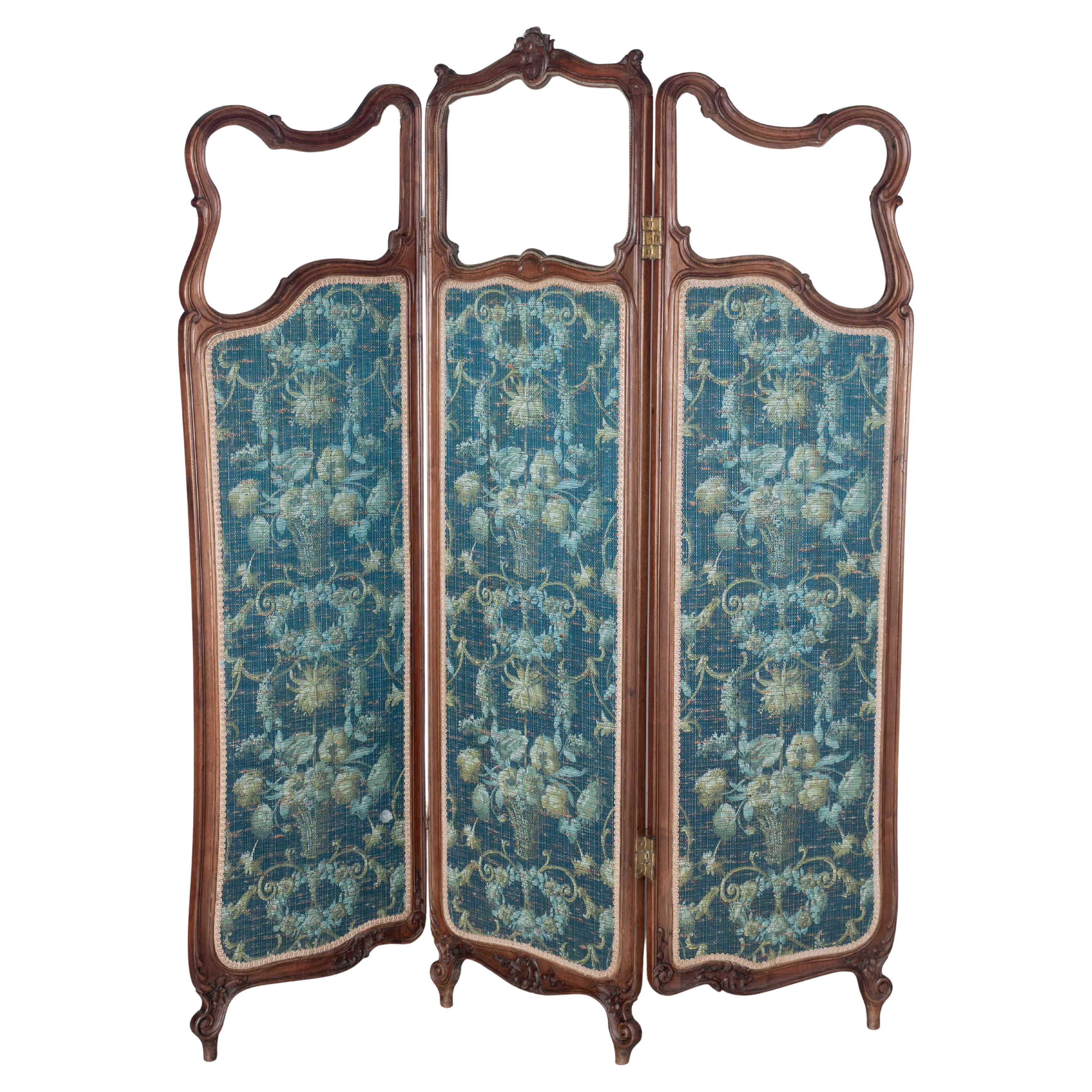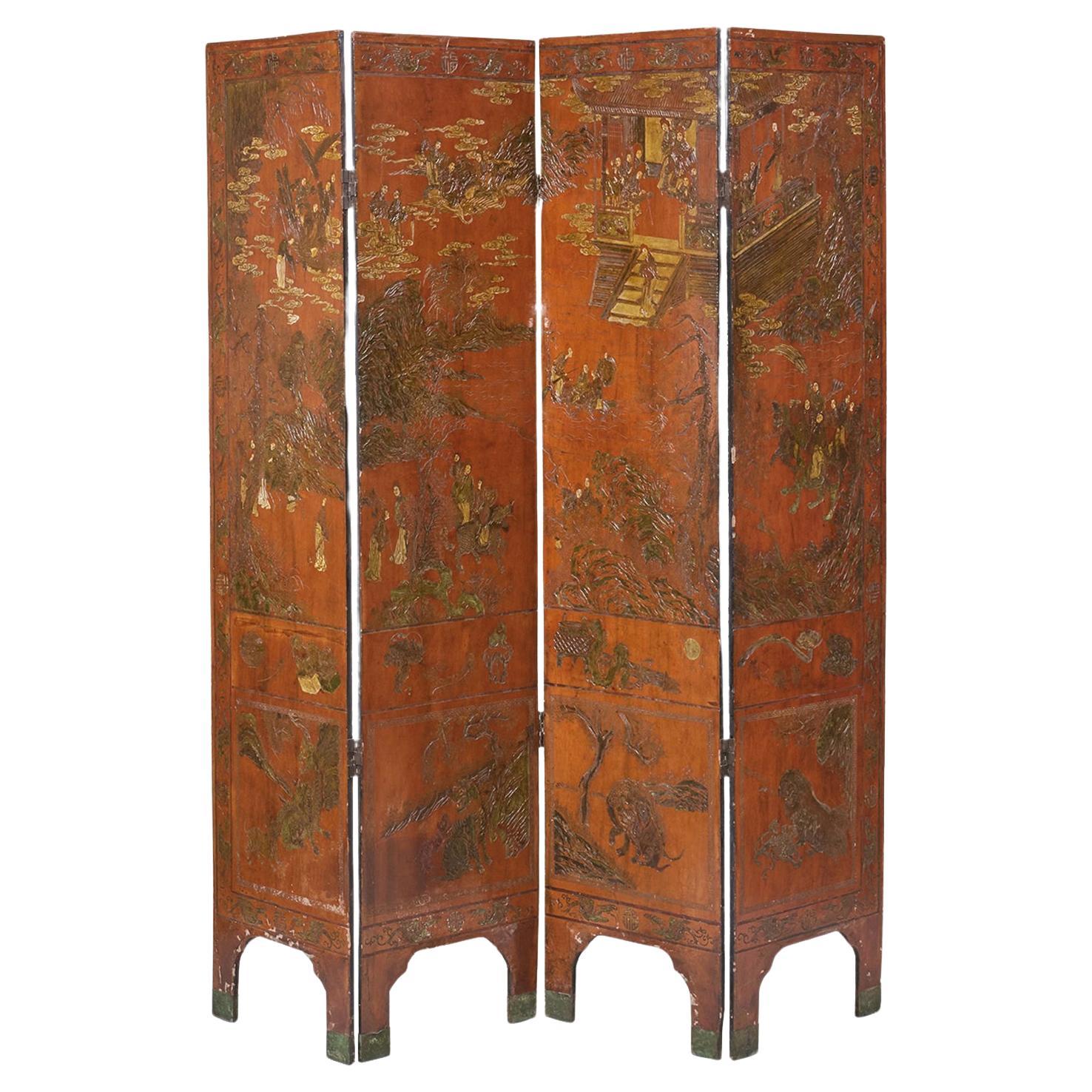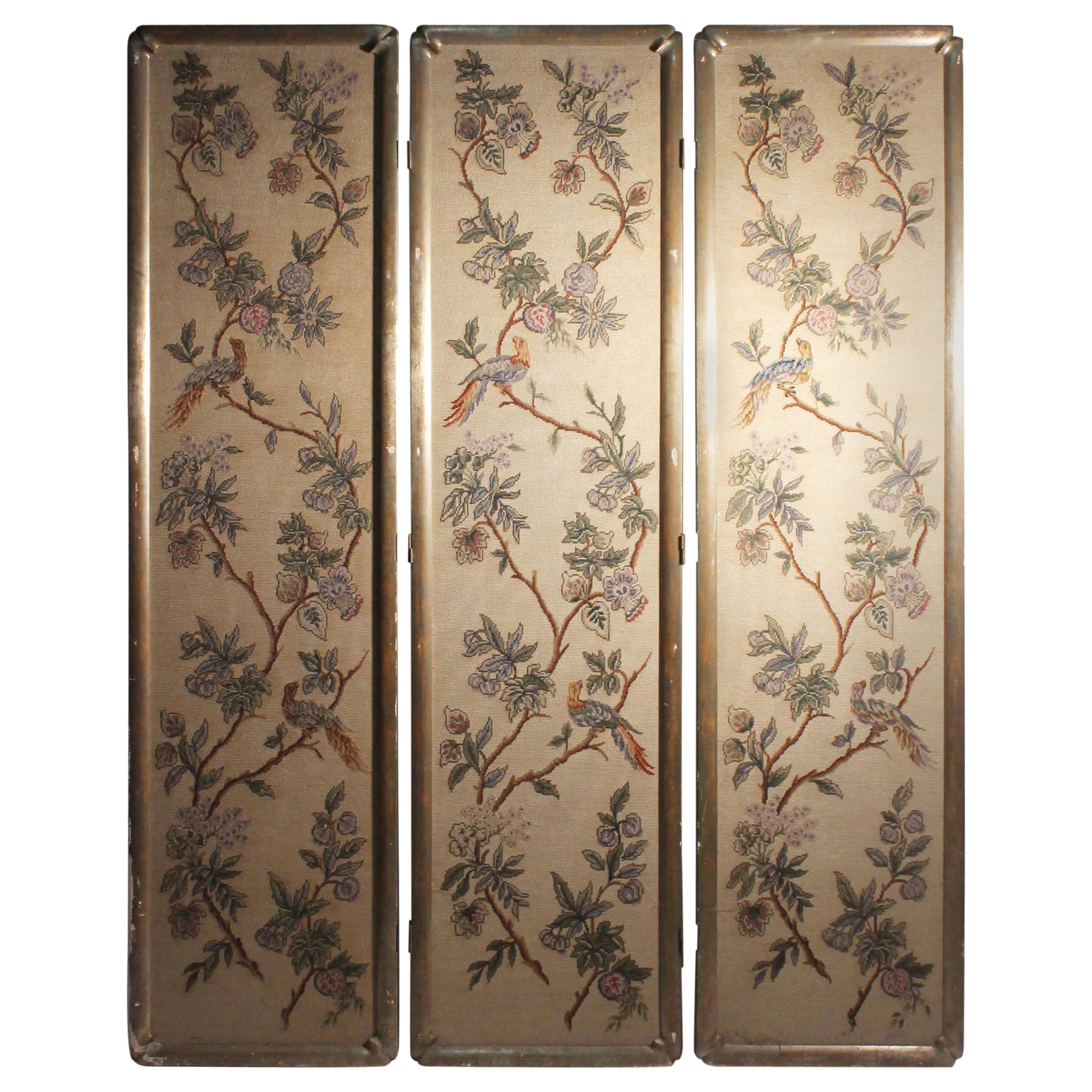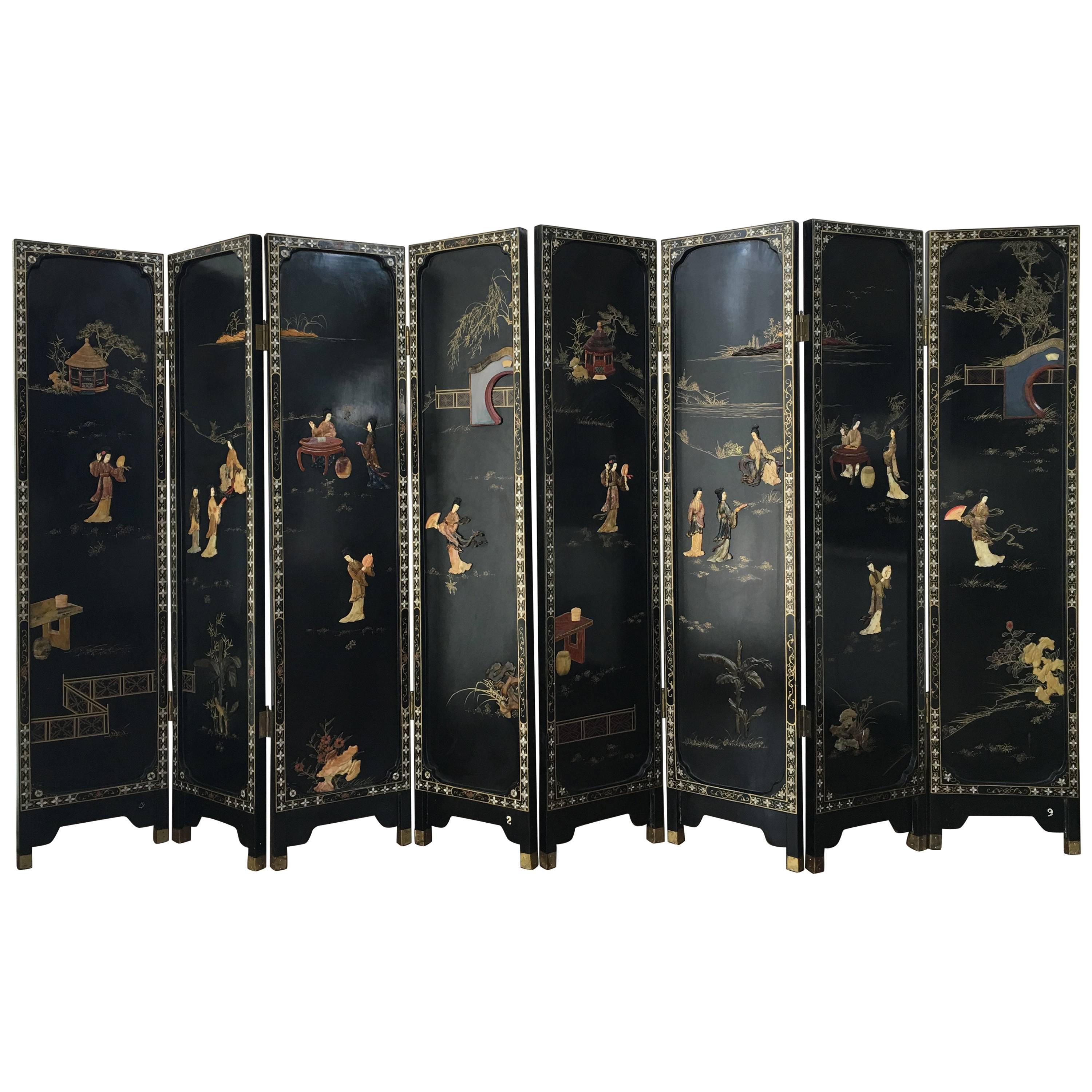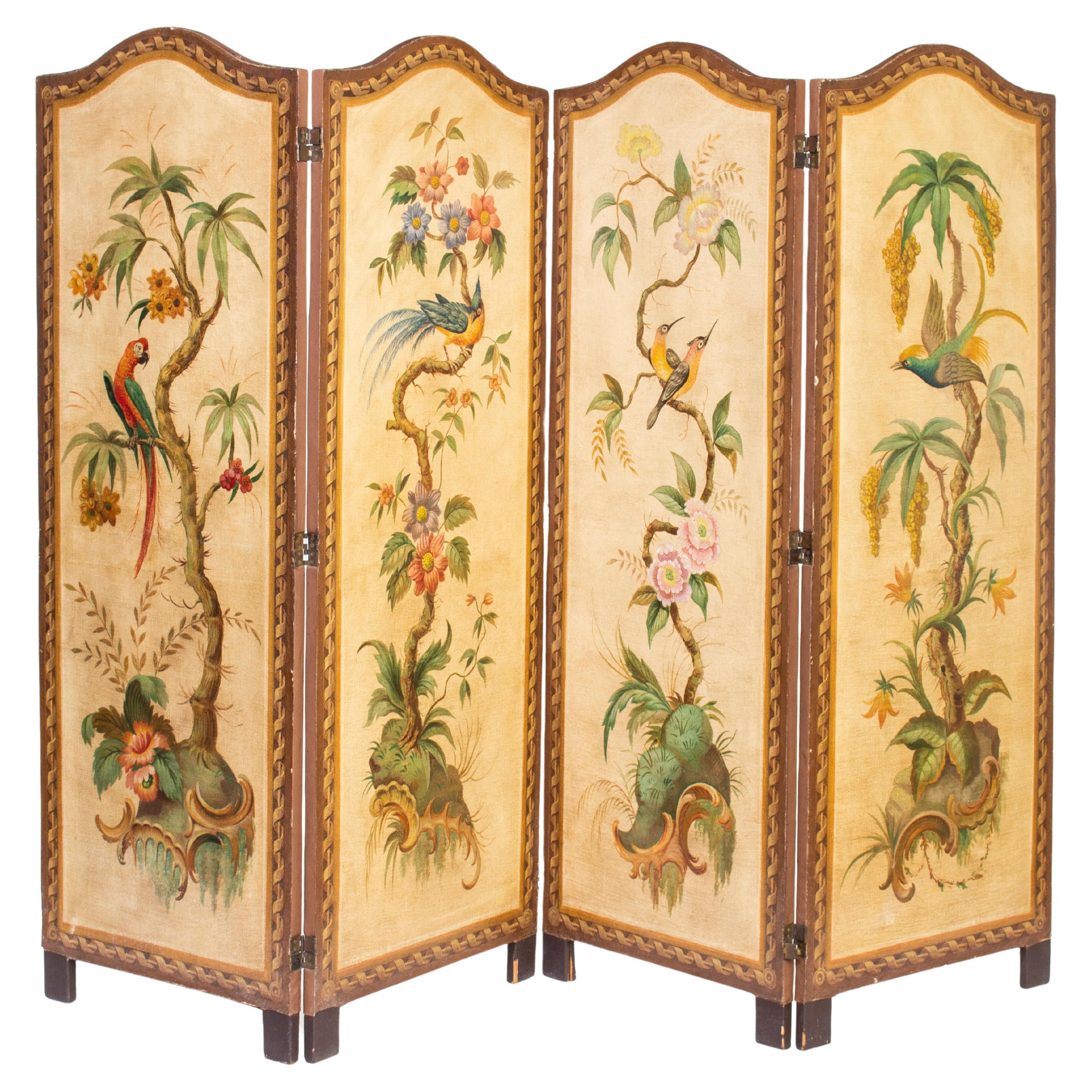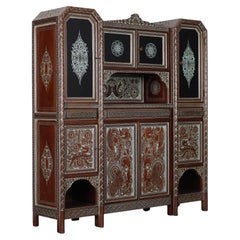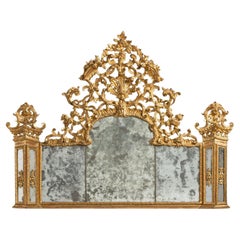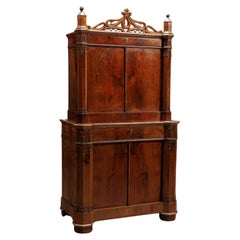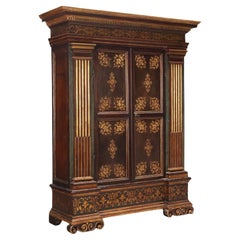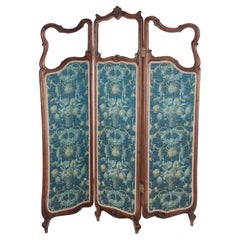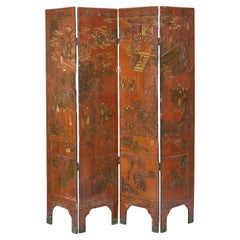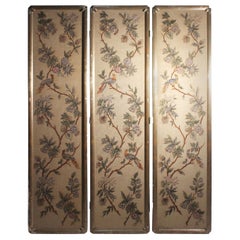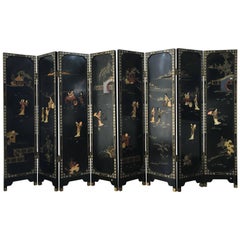Items Similar to Chinoiserie-style screen. Italy, second quarter 19th century
Video Loading
Want more images or videos?
Request additional images or videos from the seller
1 of 13
Chinoiserie-style screen. Italy, second quarter 19th century
$23,095.25
£17,250.05
€19,500
CA$31,687.59
A$35,405.60
CHF 18,521.05
MX$434,186.11
NOK 236,663.90
SEK 224,420.07
DKK 148,449.74
Shipping
Retrieving quote...The 1stDibs Promise:
Authenticity Guarantee,
Money-Back Guarantee,
24-Hour Cancellation
About the Item
Five-panel jointed screen; made of poplar entirely lacquered in black, it is decorated with Chinoise-like painted motifs: dragons, monkeys, birds, and reserves depicting scenes of Chinese life, juggling and fighting. Features gilded leaf frames decorating the cymatium and lower part. Revisited by designer Pietro Russo with Dedar fabric.
Already widely used at the end of the perceding century, chinoiserie became truly popular in the nineteenth century, appreciated and in demand by the major European courts. References to China and the Orient in general were able to invoke an exoticism that was as qppereized on an aesthetic level as it was on a cultural level.
Indeed, the calligraphy of the chinoiserie drawings, the heterongeneous bestiary (both real and fantastic), and the scenes of life, offered endless decorative solutions for small objects and entire walls, creating interesting sccenographic effects in the layout of the large rooms. Among the main proponents of chinoiserie was King George IV, who, with the construction of the Royal Pavilion in Brighton as a seaside pleasure palace, decided to fit out some of the rooms in precisely this style. In particular, the Banqueting Room, Long Gallery, and Music Room feature oriental-style furniture, chandeliers, and objects such as china, as well as carpeting and stained glass.
The walls of the room devoted to music, were decorated with scenes of Chinese life, in gold on a red background, created by Frederick Crace and Henry Lambelet and taken from William Alexander's The Customs of China (1805). In the Royal Pavilion, Chinese export hand-painted furniture, objects and wallpapers coexist with others made in England, with an oriental flavor mediated by the Western gaze and fashions. There are numerous examples of chinoiserie in Italian courts as well, a style beloved in particular by the Savoy family, who chose it to set up some of the rooms at Stupinigi and Racconigi.
Another example can be found can be found can be found in the Piedmontese wallpaper room at the Quirinal Palace in Rome.
- Dimensions:Height: 81.5 in (207 cm)Width: 133.86 in (340 cm)Depth: 1.58 in (4 cm)
- Style:Other (Of the Period)
- Materials and Techniques:Poplar,Lacquered
- Place of Origin:
- Period:
- Date of Manufacture:1800s
- Condition:Wear consistent with age and use.
- Seller Location:Milano, IT
- Reference Number:1stDibs: LU1721237891472
About the Seller
4.9
Platinum Seller
Premium sellers with a 4.7+ rating and 24-hour response times
Established in 2015
1stDibs seller since 2015
425 sales on 1stDibs
Typical response time: 1 hour
- ShippingRetrieving quote...Shipping from: Milan, Italy
- Return Policy
Authenticity Guarantee
In the unlikely event there’s an issue with an item’s authenticity, contact us within 1 year for a full refund. DetailsMoney-Back Guarantee
If your item is not as described, is damaged in transit, or does not arrive, contact us within 7 days for a full refund. Details24-Hour Cancellation
You have a 24-hour grace period in which to reconsider your purchase, with no questions asked.Vetted Professional Sellers
Our world-class sellers must adhere to strict standards for service and quality, maintaining the integrity of our listings.Price-Match Guarantee
If you find that a seller listed the same item for a lower price elsewhere, we’ll match it.Trusted Global Delivery
Our best-in-class carrier network provides specialized shipping options worldwide, including custom delivery.More From This Seller
View AllMid-20th Century Italy Walnut Parlour Furniture in Ethnic Taste
By Non-Standard Furniture and Lighting
Located in Milano, IT
1950s hall furniture made by artist Rino Galbiati. An architectural piece of furniture with an ethnic flavor, it has doors in the lower part, hidden drawers in the center band and in...
Category
Vintage 1950s Italian Mid-Century Modern Credenzas
Materials
Nutwood
Chimney. Turin, Early 18th Century
By Non-Standard Furniture and Lighting
Located in Milano, IT
Richly carved gilded chimneypiece, supporting frame and projecting side uprights with double frames with mirrors surmounted by carved architectural cymas. In the center imposing one-...
Category
Antique Early 1700s Italian Other Mantel Mirrors and Fireplace Mirrors
Materials
Mirror, Wood
Coin cabinet, Piedmont, second quarter of the 19th century
By Non-Standard Furniture and Lighting
Located in Milano, IT
Two-body cabinet completely veneered in mahogany feather; it has both in the narrower upper part and in the lower part two doors surmounted by a drawer and framed by a pair of uprigh...
Category
Antique 19th Century Other Sideboards
Materials
Mahogany
Armadio Manierista Toscana, inizio XVII Secolo
By Non-Standard Furniture and Lighting
Located in Milano, IT
Armadio Manierista in noce laccato, con parti in noce, parti dipinte e parti dorate a foglia oro. Fronte con coppia di ante esternamente bipartite, decorazioni fogliacee dorate nell...
Category
Antique 17th Century Italian Other Wardrobes and Armoires
Materials
Nutwood
Wooden Chest Carved and Gilded Italy 19th Century
By Non-Standard Furniture and Lighting
Located in Milano, IT
Chest built from wood dating back to the 17th century. Top and sides made of painted wood, undercounter frame and richly carved and gilded front depicting putti in the central reserv...
Category
Antique Early 1800s Italian Other Cabinets
Materials
Giltwood
Lacquered Frame, Veneto, Last Quarter of the 18th Century
Located in Milano, IT
Rectangular frame completely carved with leafy volutes and bouquets of flowers. An oak wreath carved border delimits the internal light of the frame, which is composed of an elaborat...
Category
Antique Late 18th Century Italian Other Picture Frames
Materials
Oak
You May Also Like
Louis XV Style French Folding Screen or Room Divider
Located in Winter Park, FL
A 19th century French Louis XV paravent, or folding screen, with hand-carved walnut frame. Three hinged panels are each lined on both sides with beautiful teal blue textured wall pap...
Category
Antique 19th Century French Louis XV Screens and Room Dividers
Materials
Glass, Walnut
Antique Chinese Four-Panel Folding Screen
Located in New York, NY
Handcrafted in the Early 20th Century, this antique Chinese folding screen features intricately carved designs on both sides. Beautiful...
Category
Early 20th Century Chinese Screens and Room Dividers
Materials
Wood
Vintage Italian Chinoiserie Room Divider Screen
Located in Chicago, IL
Beautiful vintage Italian chinoiserie or oriental room divider screen with stitched panels of foliage, flowers and birds of different colo...
Category
Mid-20th Century Italian Mid-Century Modern Screens and Room Dividers
Materials
Wood
Pair of Four-Panel Reversible French Chinoiserie Coromandel Screens Paris, 1920s
Located in Miami, FL
Eight-Panel Reversible Chinese Coromandel Screen
Pair of French chinoiserie screens, Paris, 1920s
This French chinoiserie screens from the ...
Category
Early 20th Century French Chinoiserie Screens and Room Dividers
Materials
Wood, Mother-of-Pearl
Baroque Folding Screen
Located in Budapest, HU
Baroque folding screen in excellent condition. Pine frame, painted canvas.
Category
Antique 18th Century Italian Baroque Screens and Room Dividers
Materials
Canvas, Wood
$5,001 Sale Price
30% Off
Italian Folding Screen
Located in Houston, TX
This six-panel screen borrows from the Roman practice as an homage to the great designers that came before. Ancient roman courtyard houses typically had architectural elements crown ...
Category
Early 20th Century Neoclassical Screens and Room Dividers
Materials
Wood, Paper
$5,800
More Ways To Browse
Royal Pavilion
Used Banquet Furniture
Used Furniture Brighton
Henry Vi
Antique Tanto
Folding Dressing Screen
Four Panel Mirror Screen
Gilt Leather Screen
Maitland Smith Painted Panels
Modernist Screen Room Divider
Rattan Folding Screen
Screen 9 Panel
Antique Japanese Room Dividers
Antique Japanese Screens Room Dividers
Botanical Room Divider
Hand Painted Dressing Screen
Paravent Vintage
Gold Coromandel Screen
